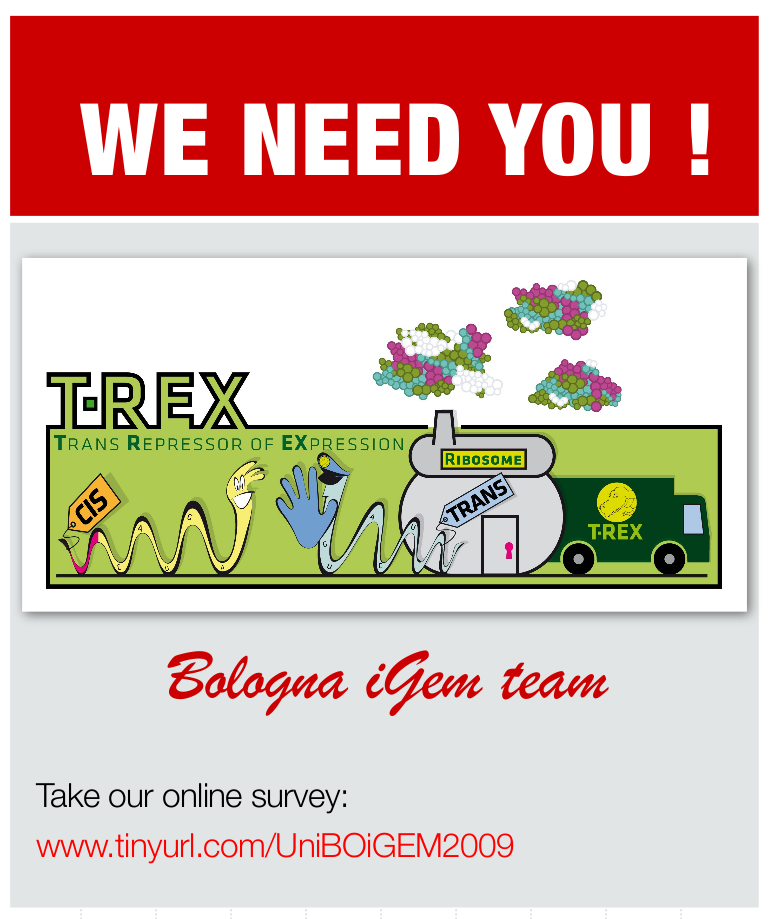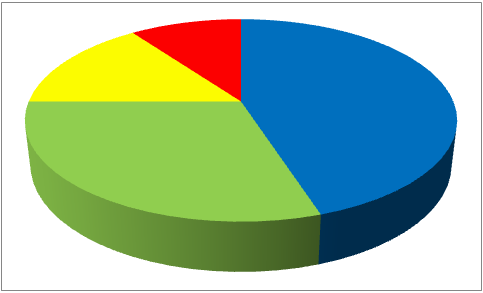Team:Bologna/HumanPractice
From 2009.igem.org
Marco.cavina (Talk | contribs) |
Marco.cavina (Talk | contribs) |
||
| Line 35: | Line 35: | ||
* devoid of competitive advantages in the environment; | * devoid of competitive advantages in the environment; | ||
* non-mobile. | * non-mobile. | ||
| - | + | <br><br> | |
<b>Is there a local biosafety group, committee, or review board at your institution?</b> | <b>Is there a local biosafety group, committee, or review board at your institution?</b> | ||
Revision as of 19:07, 21 October 2009
| HOME | TEAM | PROJECT | SOFTWARE | MODELING | WET LAB | PARTS | HUMAN PRACTICE | JUDGING CRITERIA |
|---|
F. J. Dyson
Biosafety and the Bologna Team Project:
Requirements:
For iGEM 2009 teams are asked to detail how they approached any issues of biological safety associated with their projects. Specifically, teams should consider the following four questions:
Would any of your project ideas raise safety issues in terms of: researcher safety,public safety, or environmental safety?
Manipulating biological agents requires a) identification of potential danger and b) setting up proper risk containment.
E. coli strains in use in our Lab are considered unharmful following the International classification. We are not aware of reports describing them as responsible of either toxic or allergic reactions in humans or in animals. Moreover, E.coli does not have any pathogenic effects in plants.
Although our procedures are almost void of risk, manipulation of E. coli was carried out using all the care required for class 1 microorganisms as reported in the guidelines released by the European Parliament (Directive 2000/54/EC) on the protection of workers from risks related to exposure to biological agents at work. This Directive includes genetically modified biological agents. Lab coats, gloves, goggles and masks were available to operators informed on procedures and precautions.
In addition, commercial E. coli strains are devoid of :
- thermostable/termolabile enterotoxins;
- Shiga and Shiga-like toxinsTossine;
- VIR cytotoxins.
They do not have any competitive advantage in colonizing the enviroment and an unlikely transfer of their synthetic DNA to other microorganisms – however circumvented – would not represent a danger as DNA sequences are:
- known as non dangerous;
- with limited dimensions and without unknown flanking sequences;
- devoid of competitive advantages in the environment;
- non-mobile.
Is there a local biosafety group, committee, or review board at your institution?
There is an official biosafety committee at the University of Bologna. This committee periodically schedules meetings and seminars on the biosafety and biosecurity topics for a good information of the people working in the University labs. Moreover, each laboratory has its own biosafety/security overseer to control that all the safety/security indications are fulfilled.
What does your local biosafety group think about your project?
Considering the above mentioned specifications, no concerns were raised.
Do any of the new BioBrick parts that you made this year raise any safety issues?
No
Synthetic Biology is developing as one of the most exciting area of scientific discovery, but research has shown that the public is almost completely unaware of its applications.
Considering the technical nature of this area, there are many possible questions about the implications arising from its applications. All these questions are considered by Synthetic Biology which tries to use in a conscious and responsible way its techniques and promotes the objective of its studies transparently.
We decided to realize an Information Booklet explaining to people, even those that do not possess special knowledge in the Synthetic Biology field, what the 2009 Bologna Igem Team project is about. We distributed these booklets to students of the University of Bologna in order to collect their opinions and considerations once they have been informed in a few words on the basic concepts of Synthetic Biology.
In order to gather up these data we thought that may be useful to prepare a Survey and submit it to other students and friends, trying to “measure” the mistrust that those people can feel about our project and Synthetic Biology in general. If a large variety of people will answer to our questions, we could be reasonably sure that our data are indicative of the impact of our project on the public opinion.
Click on the following links to check the Information Booklet and the questionnaire:

- Information Booklet ( English version, Italian version)
- Survey about Synthetic Biology ([http://www.tinyurl.com/UniBOiGEM2009eng English version], [http://www.tinyurl.com/UniBOiGEM2009 Italian version])
Here the Results of Survey:

 "
"
